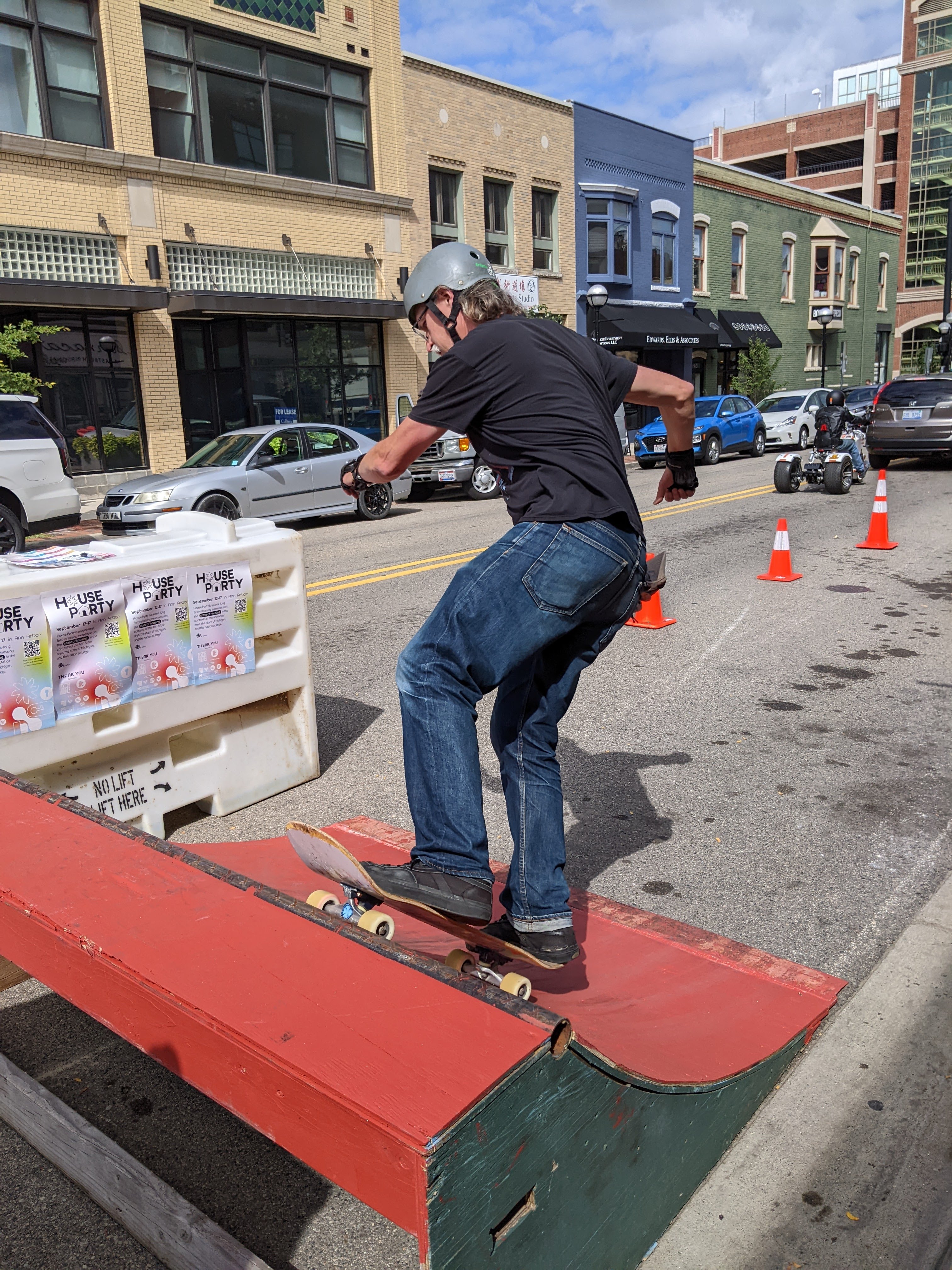I first met this adorable creature in Ann Arbor in April 2022. It was painted on a post at Packard & Arch at the tiny Forsythe Park. It offered good (albeit saucy) advice:

I’m glad I photographed it because it was soon gone. A week later the creature appeared a few blocks south, on the side of the Argus Farm Stop. This message was purely encouraging:

I didn’t see it again after that. Until this month, when the creature returned to a couple of spots on Madison St.
Here it is beaming on a planter at Madison and Main:

And finally on an electrical box near Washtenaw Dairy, on Madison west of First:

Radiant! Does anyone know what it’s saying? The same red and white paint is used in both pieces a block apart, perhaps they were created in the same evening.
I find these impressive, both creatively and technically. Is that paint? Marker? I know little about street art but I appreciate it when it’s well-done. I’m glad the creator still calls Ann Arbor home – it’s a pricey place to make it as an artist – and continues to share this creature with us.
This kind of thing is ephemeral and feels worth recognizing and documenting. My dad played poker with a guy who made a hobby out of photographing antique ads painted on sides of brick buildings around Chicago. By the time he published a book with his decades of photos (Fading Ads of Chicago), half of them had faded away or been covered up, painted over, knocked down.
If you have seen this creature elsewhere, send in your photos or tip me off to where I can spot it in the wild.








